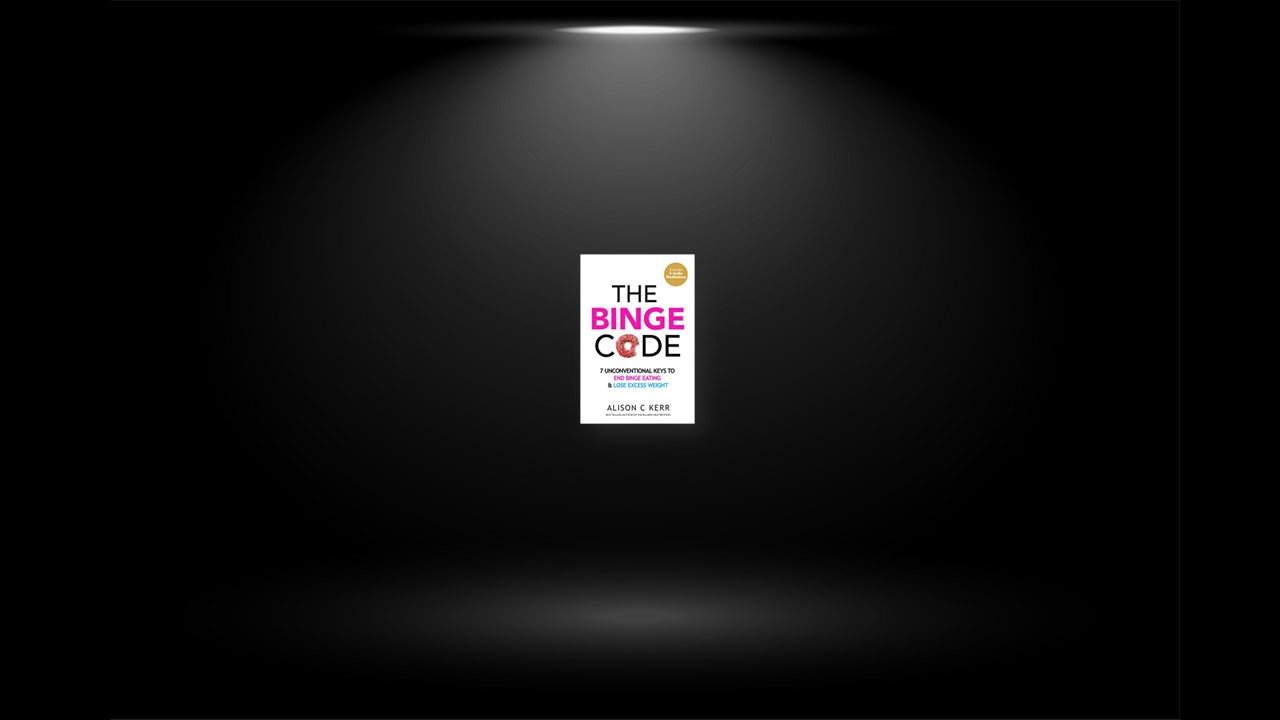Imagine you’re alone, bored and feeling down. You’ve had a stressful day and there is food in the cupboard but strangely you have absolutely no urge or desire to binge on it. Would you binge? I’m guessing not. That would be like drinking 5 gallons of water even though you had no thirst or urge to do so. The point here is this: If you didn’t experience an urge to binge, you wouldn’t binge.
It is the “urge” or “craving” to binge that makes you binge. Our goal isn’t just to stop you from bingeing, it is to completely remove the urge and desire to do so. This is an important distinction because by removing the urge to binge we help to ensure lifelong freedom.
A binge urge is actually a cascading avalanche of emotions, cravings, chemical responses and biological reflexes. It’s a lot to deal with and it can all happen in a matter of seconds. No wonder you’ve found it so hard to resist your binge urges.
You may be thinking, “Well then HOW am I EVER going to escape my binge urge if I have no control over it? I’m doomed!”. Don’t worry, you are far from doomed.
SPOTTING A BINGE URGE
The first thing we need to do is to spot a binge urge. Noticing is the key. If you notice what’s happening, then you can make a choice about how you respond to what’s happening. You can choose to do something else rather than reacting with your usual, habitual patterns. You can interrupt your conditioned response. You can apply the Zen10 technique.
First, we’ve got to catch a binge urge sneaking up so that we have time to stop it in its tracks. In order to do this, we must first recognize the initial binge urge signs.
Some early physical indications of an oncoming binge urge might be:
- Feeling physically jittery and agitated
- Feeling tight or heavy in your chest
- Feeling flustered and constricted in your throat
- Shallow, quick breathing
- Churning in your stomach
- Feeling disconnected from your body (not being able to feel your body clearly)
- Not being able to settle physically
Early emotional indications could include:
- Sudden anger
- Blurry thinking
- Emotional unease
- A sense of sadness out of nowhere
- Feeling uncomfortable in your own skin
- Being annoyed at yourself or the world
- Feeling frustrated or having lots of chaotic thoughts
Think about what your signs may be. How do your behaviors change when you’re on the verge of a binge? How do you start acting when you’re feeling out of control around food? What are the signs that show you’re struggling? Are you very quiet? Do you exhibit nervous behaviors like nail picking, hair twisting or hand rubbing? Try to make a note of the signs, no matter how small. This is valuable information. Binge urge sensations are different for everyone and learning your specific cues gives you the power to gain the upper hand.
THE ZEN10 TECHNIQUE
A binge urge triggers our fight or flight response which then floods our body with chemicals, shuts down our brain and intensifies cravings for fatty, sugary foods. This can turn us into brainless, food eating zombies. We need to snap out of it somehow. We need to do something sudden and unexpected to totally defy the habitual thought patterns, break free from autopilot and take us out of fight-or-flight.
Whenever you notice you’re craving a binge, in that moment, I want you to say to yourself, “Zen10!”. So that the phrase “Zen10!” reminds you that you’re going to do something different this time. This will help snap you out of autopilot.
Then give yourself 10 minutes before acting on your urges. By giving yourself a buffer of 10 minutes, you help to create a space between your binge urges and your response. In that space you allow the binge urge to rise and fall and do whatever it wishes, but you take no action towards having a binge.
10 minutes is a short, manageable length of time. If you try to hold off any longer you may feel overwhelmed, deprived or unable to cope. Set your watch if you need to and simply avoid taking any action towards a binge urge until the 10 minutes have passed.
Research by neuroscientists proves that even a 10-minute wait can drastically reduce the brain’s response to a craving. Binge urges are not constant. They ebb and flow in waves. By delaying 10 minutes you give yourself the opportunity to see if the urge will pass. This is especially true if the binge urge triggered your fight-or-flight response. It may take a good ten minutes (or longer) for you to start to feel normal again as your body needs time to flush out all the stress hormones that were activated.
Resting in the space between
Once you have allocated your 10 minutes the next step is to cultivate a space between your cravings and your reaction.
Have you ever seen Zen monk meditating? They can sit still for hours at a time. They may experience periods of feeling uncomfortable, they may feel itchy, a fly might land on their nose, but they still don’t move. They are able to shrug off any discomfort and place it aside. Their mind is able to remain strong, resilient and Zen like. They don’t react to their impulses. There is a still space between their impulses and their actions.
We can do something similar. We often react to binge urges without thinking. We frequently don’t choose our behaviors so much as just act them out. But we can learn from our Zen monk friends. We can cultivate a space between an urge and our response.
When we have a powerful binge urge it can feel like it’s coming from deep inside our core. It feels really personal, like it’s a part of who we are. It can feel like a response to some unmet emotional need, or a response to some past trauma or pain. Even though it feels personal, we can still separate our personal self from it. We don’t need to respond to it instantly. We don’t need to be so reactive. Instead, we can learn to notice that there is a “space” before we react. We can learn to make use of this “space”. Within that moment of space, we can observe without judgment, we can accept that we are triggered and then we can ultimately choose how to respond to the trigger. This puts us back in the driving seat and in control.
Realize that you are in control
The binge urges do not control you. You are in control. Yes, I know in the middle of a binge urge it can feel impossible to resist. But even the most powerful desires are just feelings-coated information. They are simply messages, suggestions that can be followed or ignored. We can choose our reaction.
For example, should you find yourself going towards the fridge for a binge, the very moment you notice your body reacting with movement… stop moving. Stand completely still. Realize that your thoughts cannot make you move. Realize your body is totally unaffected. The urge to binge is powerless unless you act on it. You may feel waves or a compulsion to binge, but they cannot make you move. You have the power. You are not your thoughts; you are not your desires. You are the strong silent one underneath it all. The Zen one.
Dismiss the binge urge
A great way to distance yourself from a binge craving is to dismiss it. The only power a binge urge sensation has over you is the power and meaning you give to them. So, give it no significance or meaning. Normalize it. Ignore it. Dismiss it. Brush it off. Detach yourself from the sensation. Be indifferent to it. Think of it as just another occurrence, like a sneeze or a shiver. Something that happens, then passes, that requires no further attention. Just think: “Oh well, here’s another binge urge, it’s just a sensation, it’ll pass in time.”
The more dismissive you are towards your binge urges the less power they have over you. It’s like the school bully trying to taunt you into a fight. Just let the bully be there, taunting you, but don’t give the bully the time of day. Just ignore the bully and walk away. Think, “WHATEVER!”.
After 10 minutes
If you manage to delay bingeing on food for 10 minutes, congratulate yourself. Well done! What should you do next?
Take a moment to tune in and see how you feel. If the binge urge has passed, great! Move on with your day. If the binge urge is still present, first of all, don’t panic. Sometimes a binge urge can take a bit longer to pass. You now have a few options for your next course of action. If you feel strong enough you can try to delay the binge urge for a further 10 minutes.
If, after 10 minutes you still have strong cravings to binge on food then you may need to assess whether or not you are actually just hungry. Binge cravings tend to be more fleeting whereas real hunger tends to be more stable and less fluctuating. As you progress you will begin to develop a much clearer understanding of what real hunger feels like and you’ll be able to clearly differentiate between the two.


